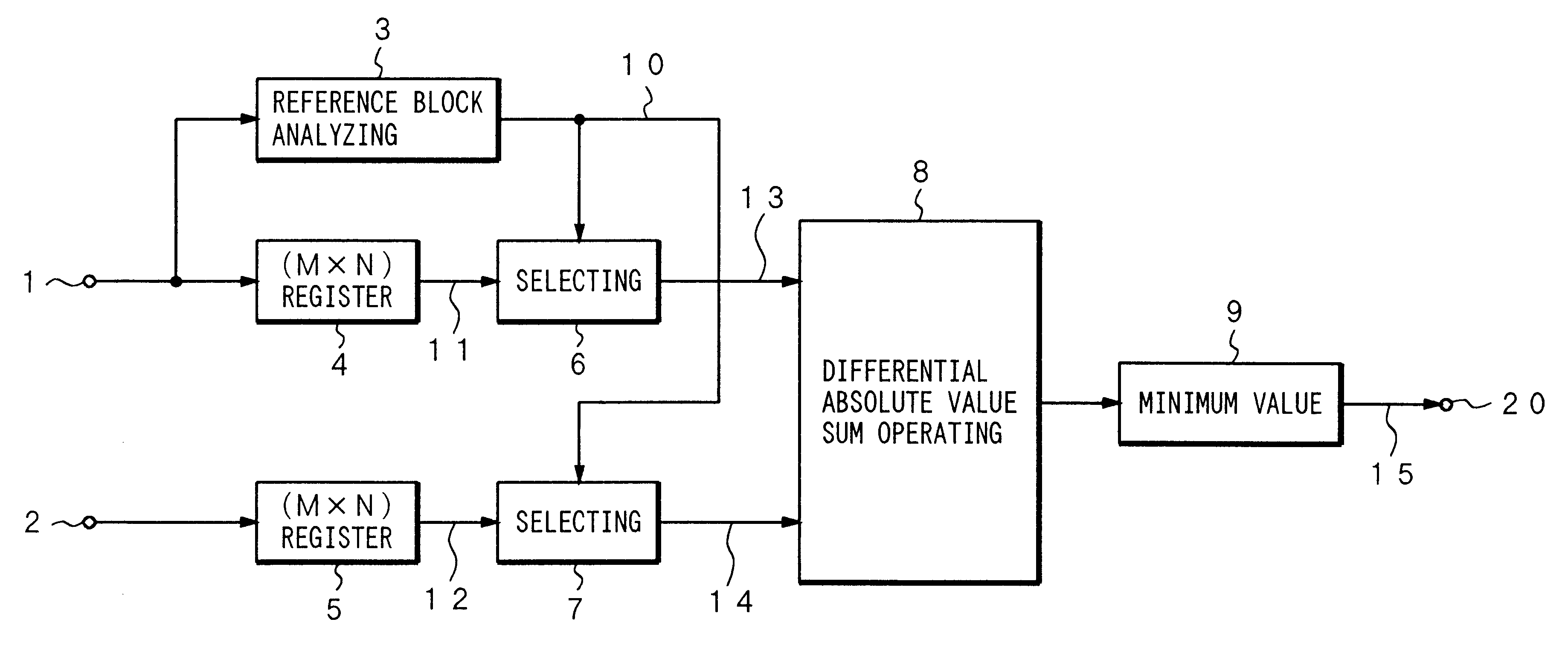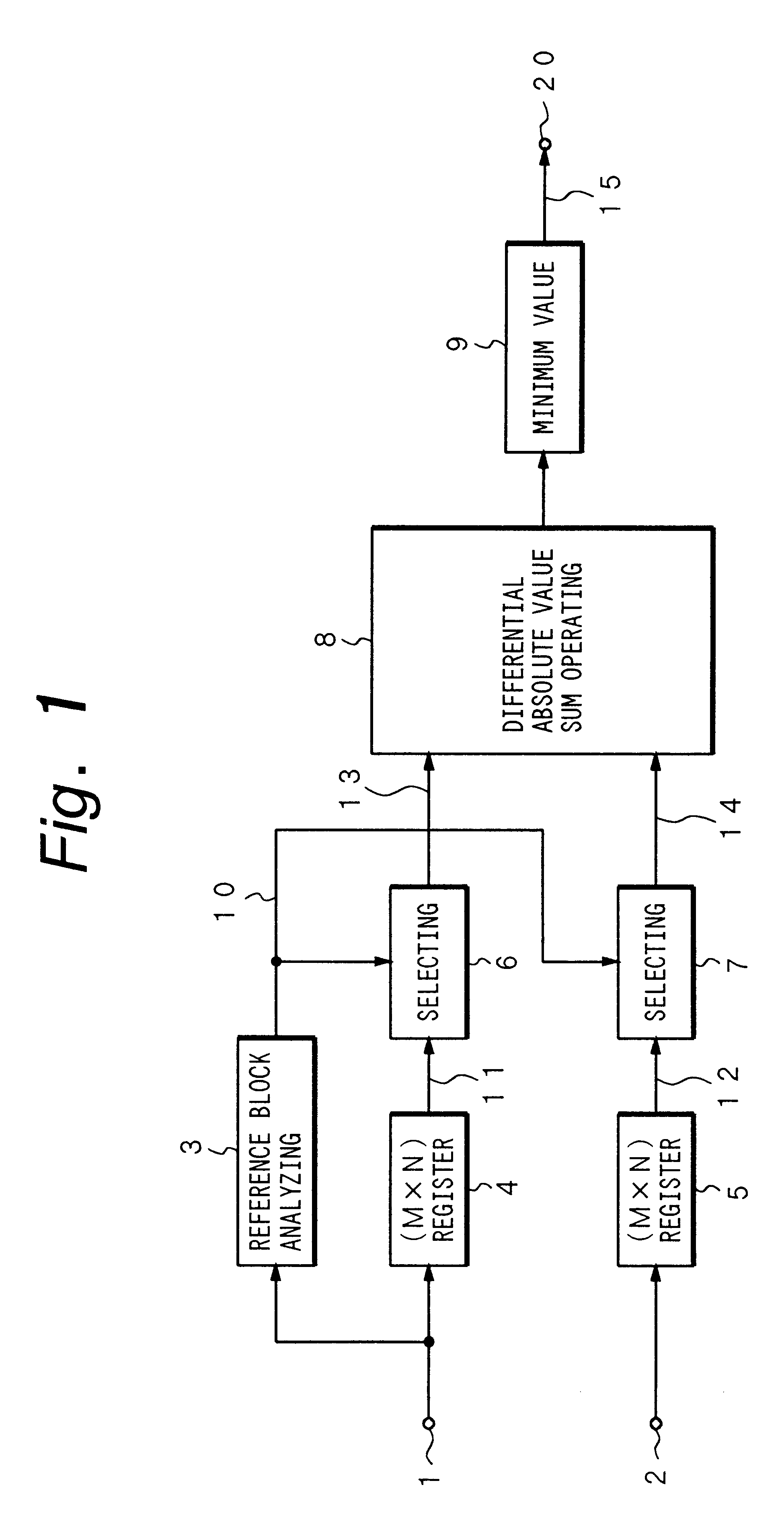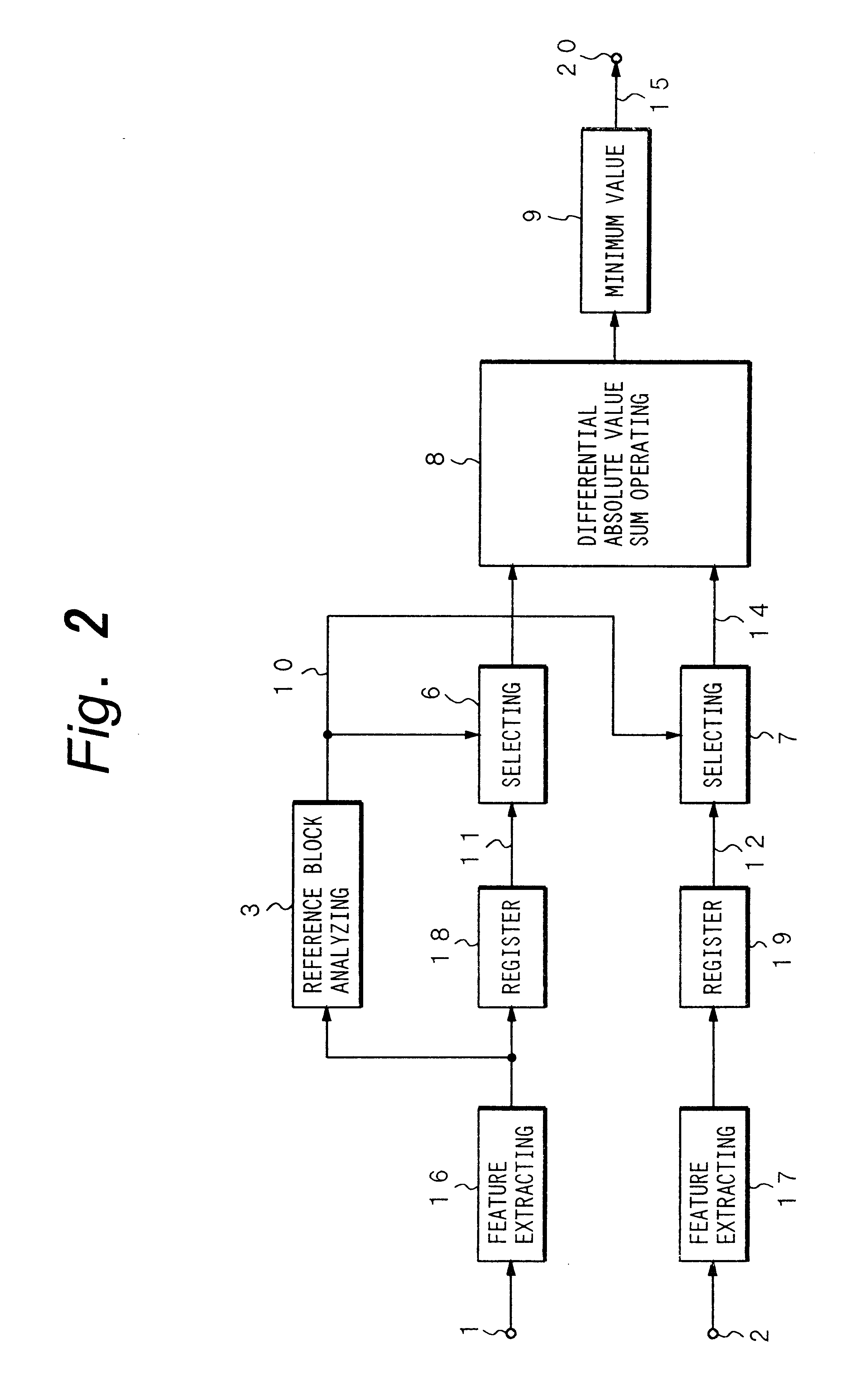Adaptive motion vector detecting apparatus and method
- Summary
- Abstract
- Description
- Claims
- Application Information
AI Technical Summary
Benefits of technology
Problems solved by technology
Method used
Image
Examples
first embodiment
the invention will be described with reference to the motion vector detecting circuits of FIGS. 1 and 2. In FIG. 1, the motion vector detecting circuit receives reference and check block data from input terminals 1 and 2, respectively. The blocks are stored by registers 4 and 5. A reference block analyzing circuit 3 commands selecting circuits 6 and 7 to adaptively select pixels of each block. The selected pixels are forwarded to a differential absolute value sum operating circuit 8 which calculates the residual difference. A minimum value circuit 9 selects the minimum residual difference because the correct check block should have a minimum difference between successive frames and the correct residual difference is output.
The adaptive selection operation of the motion vector detecting circuit will now be described in more detail. The reference block data is supplied to the input 1 and forwarded to both the reference block analyzing circuit and the (M.times.N) register 4. The check ...
second embodiment
The second embodiment will now be described with reference to FIGS. 3, 4A to 4C, 6, 7A and 7B. FIG. 3 is a representation of pixels in a 4.times.4 block. According to the second embodiment, adaptive sampling is achieved by dividing the blocks into sub blocks 30 and 31 (here, two 4.times.2 sub blocks) and determining the maximum and minimum pixel values for each sub block.
FIG. 4A, for example, shows the reference block 40 divided into two 4.times.2 sub blocks 41 and 42. The extracted maximum pixel values (a and b) in each sub block are shown by the hatched circles while the extracted minimum values in each sub block are indicated by the dotted circles (c and d). Similarly, the check block 43 of FIG. 4B is divided into two sub blocks 44 and 45 and the extracted maximum and minimum values are indicated by the circles (a', b', c' and d'). The extracted values are sent to a differential absolute value sum operating circuit 61 (FIG. 6) and the residual difference is calculated therefrom. ...
PUM
 Login to View More
Login to View More Abstract
Description
Claims
Application Information
 Login to View More
Login to View More - R&D
- Intellectual Property
- Life Sciences
- Materials
- Tech Scout
- Unparalleled Data Quality
- Higher Quality Content
- 60% Fewer Hallucinations
Browse by: Latest US Patents, China's latest patents, Technical Efficacy Thesaurus, Application Domain, Technology Topic, Popular Technical Reports.
© 2025 PatSnap. All rights reserved.Legal|Privacy policy|Modern Slavery Act Transparency Statement|Sitemap|About US| Contact US: help@patsnap.com



